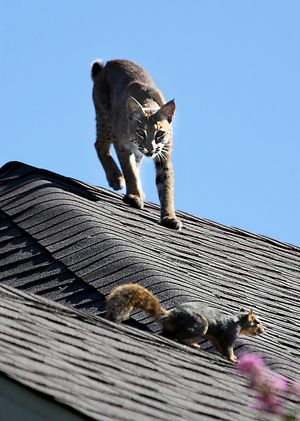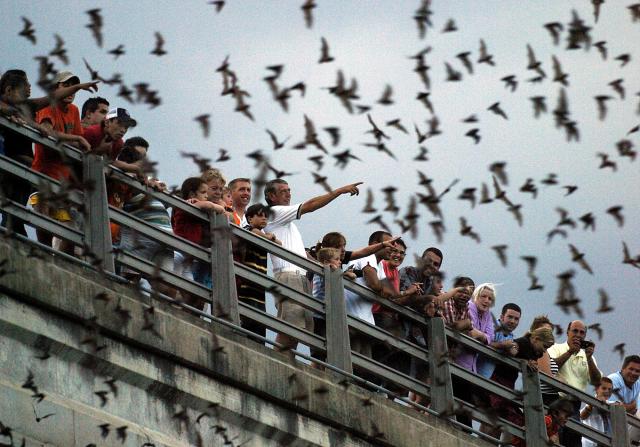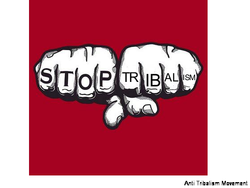Many of you are probably asking one of
two questions right now, what is Urban Wildlife? Is it the same thing
as Pest Control? To the first question it is exactly what it sounds
like: wildlife that can be found in urban or city areas.
For the
second question, personally I would say n

wildlife that has become a nuisance or a pest. In this instance we
often think of raccoons or feral cats. Yet working with urban
wildlife is completely different.
As a child I thought that I never
really encountered wildlife unless I was outside of the city. As I
grew older I figured out that I had encountered wildlife everyday of
my life.
Animals that we consider to be staples of city life, yet
were never meant to live here. They have just adapted to this life
because it provides them with more protection than there natural
habitats, and, more importantly for them, food. Some examples are
squirrels, pigeons, and water fowl.
Squirrels originally lived in the trees
of forests. Hiding from owls, hawks, and other birds of prey that
would make meals out of them.
The pigeons that we see are descended
from birds called Rock Doves, and are originally from the Middle
East. While the geese, swans and ducks that we see in our parks have
found that they are protected from their natural predators at the
lakes inside our city parks.
More than that, we habituate them
towards humans by giving them food and keeping them safe.
This is something that we can see in
history. Before the Europeans came to America there were the Native
Americans. While Archeology has shown that they did have a few
settlements that we would call cities, with around 3,000-5,000 people
living there. However, they rarely lived in groups of more than a few
hundred. After that Europeans came and brought with them this idea of
keeping unwanted animals out. We as Americans kept that idea going.
However, over the last few decades there has been a shift because on
some level, at least I believe, we have come to realize that there
are some animals who would not survive anywhere else.
When these animals become a problem the
first person you call is Pest Control. What many people don't realize
is that over the last few years more and even bigger wildlife have
started to make their way into the city. Just yesterday I read an
article from Fort Worth, Texas that asked residents to be on the look
out for an escaped Barn Owl. What was interesting was that they also
mentioned that Barn Owls are found in that city, and if anything are
common.
Back in January there was a story about
a one year old in Britain that had a finger bitten off, in her
parents back yard, by a Fox. A few years ago I can even remember
reading an article on two coyote bodies found inside the Perimeter of
Atlanta, Georgia. They were killed by cars, but what was scary was
that one was found near an Elementary school in Midtown.
Then you have those places that have
become synonymous with wildlife and people come from all over the
world to see them. How many stories have you read of motorists
stopping to let duck cross the road? Being helped by security to get
onto the White House lawn?
Anyone hear of the Congress Avenue
Bridge in Austin, Texas?
Even talking to a friend a few days ago
brought up a story that is becoming more and more common over the
years, deer eating the plants from your front yard.
The fact is that in this day in age,
many more wildlife are finding ways to live in the city with us. They
are changing there habits to not only live with us, but also thrive.
However, there are still many more problems that are going to need to
be addressed. What happens when you hit a deer in the city and it
kills another motorist? Are you still at fault? If you are attacked
by a bird of prey do you get compensated by the city? Should it even
be legal to feed deer or other wildlife inside a city limit?
There are so many questions that we
just do not have the answers to and soon people are going to be
demanding these answers. This is Urban Wildlife and this is the field
that I want to go into. I want to find these answers that people will
need and then work with them to understand not only how the animal
works, but also why the animals are the way they are. Finally I want
to be able to help you still enjoy the wildlife that is all around
you, just being a little safer.











